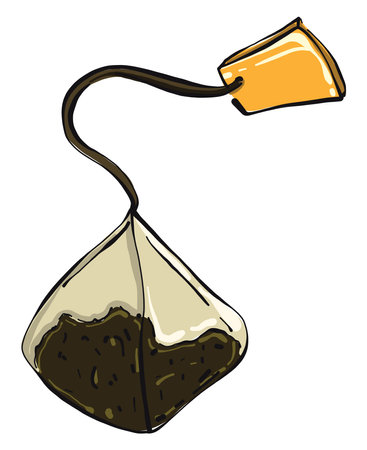Introduction: The Chai Nation’s Coffee Story
When one thinks of India, visions of steaming cups of masala chai dance before the mind’s eye—aromas of cardamom and ginger wafting through crowded railway stations and bustling bazaars. Yet, hidden behind the curtain of this chai obsession is a quieter revolution: coffee. In the rolling hills and misty forests of the Western and Eastern Ghats, far from the noise of city life, lies an aromatic legacy that has been brewing for centuries. Here, beneath a canopy of silver oaks and pepper vines, Indian coffee plantations thrive, nurturing beans that tell their own story—one both distinct from and intertwined with the nation’s love affair with tea. As the world rediscovers specialty coffees and nuanced flavors, India’s unique terroir and diverse microclimates are producing beans—Arabica and Robusta—that are increasingly finding their way into artisan cafés from Bengaluru to Berlin. This journey into India’s top coffee varieties is not just about taste; it’s about heritage, innovation, and a growing pride in a culture that is steadily turning from chai glasses to ceramic cups filled with rich Indian brews.
2. Arabica and Robusta: Defining the Beans
If you have ever sipped a cup of South Indian filter coffee or wandered through the lush estates of Chikmagalur, you’ve encountered the heartbeats of Indian coffee: Arabica and Robusta. Though they share the same soil, these beans differ in almost every other way—right from their appearance to their personality in your cup. Let’s explore how these two varieties shape India’s rich coffee culture, and why our unique climate is perfect for both.
Bean Basics: Shape, Size, and Resilience
| Characteristic | Arabica | Robusta |
|---|---|---|
| Bean Shape | Oval, with a curved crease | Rounder, with a straight crease |
| Caffeine Content | Lower (about 1.2%) | Higher (about 2.2%) |
| Plant Height | Tall & delicate (up to 15 ft) | Shorter & robust (up to 10 ft) |
| Disease Resistance | Less resistant | Highly resistant (especially to leaf rust) |
| Main Growing Regions in India | Kodagu, Chikmagalur, Baba Budangiri Hills | Karnataka plains, Kerala’s Wayanad, Tamil Nadu’s Nilgiris |
Flavour Notes: A Sip of Diversity
Arabica: Delicate, nuanced flavours—think floral aromas, citrus hints, and a silky body that gently caresses your palate. Often described as ‘sweet’, Arabica brings elegance to your morning brew.
Robusta: Bold and punchy—a strong, earthy profile with notes of dark chocolate and a distinct bitterness. The higher caffeine gives it a kick that’s perfect for those who like their coffee with attitude.
The Indian Connection: Why These Beans Thrive Here
India’s Western Ghats offer just the right altitude, monsoon rains, and shade-grown conditions that Arabica loves. On the other hand, Robusta thrives in lower elevations where the air is warmer and humidity is high—a testament to its hardiness and adaptability. This diversity not only supports smallholder farmers across Karnataka, Kerala, and Tamil Nadu but also ensures that every sip of Indian coffee tells a story as layered as our country itself.

3. Growing Grounds: Indian Coffee Belts
India’s coffee journey is rooted in the lush, undulating hills of the south. The country’s prized beans—Arabica and Robusta—thrive in three legendary belts: Karnataka, Kerala, and Tamil Nadu. These regions are not just dots on the map; they are living landscapes where every monsoon shower and each patch of red earth imparts a distinct character to your morning cup.
Karnataka: The Heartland of Indian Coffee
Karnataka, often called the ‘Coffee Bowl of India’, produces over two-thirds of the country’s coffee. Here, estates in Chikmagalur and Coorg roll out beneath layers of mist, shaded by silver oaks and pepper vines. The region’s red soil, rich with iron oxide, nourishes both Arabica and Robusta plants. Monsoon rains sweep across the Western Ghats from June to September, ensuring slow ripening of cherries—a secret behind the gentle acidity and sweet notes found in Mysore Nuggets and other local varietals.
Kerala: Where Rain Meets Tradition
Head further south to Kerala’s Malabar region, where coffee is interwoven with the rhythm of the monsoons. Here, Robusta reigns supreme—robust, earthy, and full-bodied. The famed ‘Monsooned Malabar’ process originated here: harvested beans are exposed to rain-laden winds in open warehouses, swelling with moisture and mellowing in flavour. This unique aging ritual gives rise to a cup that’s smooth as silk and low in acidity—a true taste of Kerala’s tropical bounty.
Tamil Nadu: Gentle Slopes & Shaded Groves
Tamil Nadu’s Nilgiris and Shevaroy Hills offer a subtler canvas for coffee cultivation. Arabica takes centre stage in these cool highlands, where shade trees like jackfruit and silver oak protect delicate plants from harsh sun. The combination of altitude, misty mornings, and loamy red soils allows slow maturation of beans, creating coffees with floral aromas and nuanced sweetness that grace many a filter kaapi cup across South India.
The Role of Shade Trees & Biodiversity
Across all three states, traditional growers practice ‘shade-grown’ agriculture—an ecological legacy unique to Indian plantations. Towering silver oaks, fruit trees, and spice creepers not only shelter coffee bushes but also sustain birds, bees, and even elephants wandering through estate borders. This harmony between crop and canopy preserves soil health and defines Indian coffee’s distinctive profile: balanced, complex, never rushed by sun or machine.
Shaped by Monsoon & Terroir
In every sip of Indian coffee—whether it’s a bold Robusta from Wayanad or a gentle Arabica from Baba Budangiri—you’ll find traces of these lands: the rhythm of monsoon rains on tiled roofs, the deep red earth clinging to roots, the dappled light filtering through ancient groves. Indian coffee isn’t just grown; it is nurtured by place and tradition—a brew as diverse as the subcontinent itself.
4. Taste Profiles: Sipping Indian Arabica and Robusta
If you ever find yourself in a bustling Bengaluru café or a peaceful Coorg plantation homestay, the first sip of locally brewed coffee will awaken your senses to India’s unique coffee story. The palate’s journey through Indian Arabica and Robusta is as layered and diverse as the country itself.
The Gentle Embrace of Indian Arabica
Indian Arabica, especially from estates in Chikmagalur and Baba Budangiri, offers an aromatic cup that greets you with floral notes, subtle acidity, and hints of chocolate or nuts. The body is medium, and the finish lingers delicately—never overwhelming, always inviting another sip. This nuanced profile is why many urban cafes prefer Arabica beans for their pour-overs or single origin espressos. For those seeking complexity and refinement, Indian Arabica is a gentle companion.
The Bold Punch of Robusta
Robusta, most famously grown in Wayanad and Kodagu, delivers a different kind of experience altogether. Imagine a cup bursting with earthy undertones, a peppery bite, and an unmistakable full-bodied strength. There is more bitterness, but also more crema—a reason why South Indian filter kaapi (coffee) thrives on Robusta blends. When mixed with chicory, it transforms into that classic, robust decoction poured from steel tumblers to dabarahs in every roadside “darshini” or family kitchen from Chennai to Mysuru.
Comparison Table: Indian Arabica vs Robusta Taste
| Coffee Variety | Flavour Notes | Body | Acidity | Popular Usage |
|---|---|---|---|---|
| Arabica | Floral, Nutty, Chocolatey | Medium | Mild to Medium | Single Origin Brews, Pour-over, Espresso |
| Robusta | Peppery, Earthy, Woody | Full-bodied | Low | Filter Kaapi, Instant Coffee Blends |
How Locals Enjoy Their Brew
In South India’s homes and “filter coffee” joints, the day starts with the ritual of brewing thick Robusta-heavy decoction. Mixed with hot milk and sugar, it becomes a comfort drink—one that binds generations at the breakfast table. Meanwhile, city cafes experiment with cold brews and latte art using high-grown Arabica beans sourced from Karnataka’s hills.
A Meeting Point: Modern Versus Traditional Brews
While tradition favours the punchy warmth of Robusta filter kaapi served in gleaming brass tumblers, today’s youth embrace both worlds—savouring single estate Arabicas in cappuccinos or even blending the two varieties for that perfect balance. Whether you’re a die-hard fan of strong South Indian coffee or an explorer chasing delicate notes in your cup, the palate’s journey through Indian coffee is never boring—each sip celebrates a different facet of this vast land.
5. Cultivation and Sustainability: Practices and Traditions
India’s coffee plantations are not just fields—they are living landscapes shaped by the monsoon, mountain mists, and generations of wisdom. From the emerald slopes of Karnataka to the lush estates in Kerala, Indian farmers have long embraced a harmony between nature and nurture. Traditionally, both Arabica and Robusta coffees are grown under a canopy of silver oak, jackfruit, and rosewood trees—a method known as shade-growing. This practice is more than just an agricultural choice; it’s a deep-rooted culture that safeguards biodiversity, nurtures soil health, and provides sanctuary for birds and bees.
In the heartlands of Coorg or Chikmagalur, you might spot pepper vines winding up the trunks, cardamom thriving in the undergrowth, and coffee blossoms scenting the monsoon air. These intercropping traditions bring resilience to farms and extra income to growers, making Indian coffee gardens vibrant mosaics of life.
Modern challenges like climate change have nudged farmers to blend ancestral knowledge with innovation. Many estates now use organic composts—sometimes made from coffee cherry pulp—and employ rainwater harvesting to sustain their crops through dry spells. There’s an increasing shift towards sustainable certifications such as Rainforest Alliance or UTZ, reflecting India’s commitment to global standards while honouring local roots.
Indian growers also experiment with selective hand-picking—especially for Arabica—to ensure only ripe cherries make it from bush to bag. This labour-intensive tradition preserves quality, even as mechanisation becomes tempting elsewhere. The age-old wisdom of timing harvests to the rhythm of the rains is now paired with soil testing kits and weather apps.
The result? A cup of Indian coffee that tells a story of coexistence—where ancient practices meet contemporary stewardship, and every sip is infused with respect for land and community.
6. Global and Local Impact: Exports and Indian Markets
If you wander through the lush hills of Chikmagalur or Coorg, the intoxicating aroma of coffee cherries drying under the sun hints at a journey far beyond India’s borders. Indian Arabica and Robusta beans have quietly brewed their way into the global coffee scene, earning respect for their distinct profiles—Arabica from Karnataka’s misty slopes, with its mild acidity and subtle fruit notes, and Robusta from Kerala’s shaded estates, offering bold body and earthy undertones. These beans travel across oceans, gracing Italian espresso blends and specialty cafés in Europe, America, and even Japan. The “Monsooned Malabar,” an iconic Indian export, is cherished for its unique flavor shaped by the monsoon winds—a taste of Indian terroir in every cup.
Back home, however, a different revolution is brewing. Traditionally, coffee in India was synonymous with strong filter kaapi sipped in steel tumblers along South Indian streets. But today, the scene is shifting as young urbanites in Bengaluru, Mumbai, and Delhi trade instant mixes for artisanal brews. Third-wave cafés are springing up across cities—places where beans are single-origin, pour-overs are the talk of the town, and baristas double as storytellers. This new generation is curious about where their coffee comes from—debating Arabica versus Robusta over cortados and cold brews.
The domestic market is responding. Small-batch roasters are collaborating with farmers to highlight India’s diverse terroirs. Coffee festivals celebrate local varieties with latte art competitions and cupping sessions that rival those in Melbourne or Milan. E-commerce platforms deliver freshly roasted beans to doorsteps from Shillong to Chennai, making specialty coffee accessible far beyond the cosmopolitan enclaves.
Yet, amidst this renaissance, the heart of Indian coffee remains rooted in tradition—a filter coffee shared at dawn or a roadside cup on a long train journey. Both Arabica and Robusta continue to shape not only what fills our cups but also how India expresses itself to the world: exporting heritage while embracing change one sip at a time.
7. Conclusion: The Future of Indian Coffee
Sitting under the dappled shade of an old banyan tree in Coorg or sipping a piping hot filter kaapi in a bustling Bengaluru café, one cannot help but marvel at how far Indian coffee has come. Once overshadowed by the country’s undying love for chai, Indian coffee now finds itself on the global map—its rich aromas and unique stories wafting far beyond the subcontinent.
The dance between Arabica and Robusta continues to shape this journey. Arabica, with its subtle fruitiness and elegant acidity, has won hearts in specialty coffee circles both at home and abroad. Meanwhile, robusta—bold, full-bodied, and resilient—remains the unsung hero powering every cup of strong South Indian decoction and providing backbone to international espresso blends. This diversity is India’s strength, offering something for every palate, from the cosmopolitan sipper in Mumbai to the traditionalist in Mysore.
Looking ahead, India’s coffee future is as promising as a monsoon morning in Chikmagalur. Young planters are experimenting with processing methods; estates are embracing sustainability, and Indian cafés are brewing up new narratives that celebrate both heritage and innovation. Specialty beans from Karnataka and Kerala are finding their way into European roasters’ hoppers, while local brands are making waves with single-origin offerings that speak of misty hills and spice-laden breezes.
Yet, the road ahead is not without challenges—climate change threatens delicate arabicas, labour shortages haunt estates, and global price fluctuations keep growers on edge. But if there’s anything the history of Indian coffee teaches us, it’s resilience: from Baba Budan’s legendary seven seeds to today’s thriving plantations, adaptation is in our roots.
So what does the next brew hold for this chai-loving nation? Perhaps a future where coffee stands shoulder-to-shoulder with tea—not as a rival but as a proud sibling in India’s beverage story. With every cup poured—be it a tangy Arabica pour-over or a robust Robusta filter—the world gets another taste of Indian ingenuity, warmth, and spirit.
As we raise our cups to the horizon, one thing is certain: Indian coffee is not just growing; it’s thriving—and its best days are yet to come.


